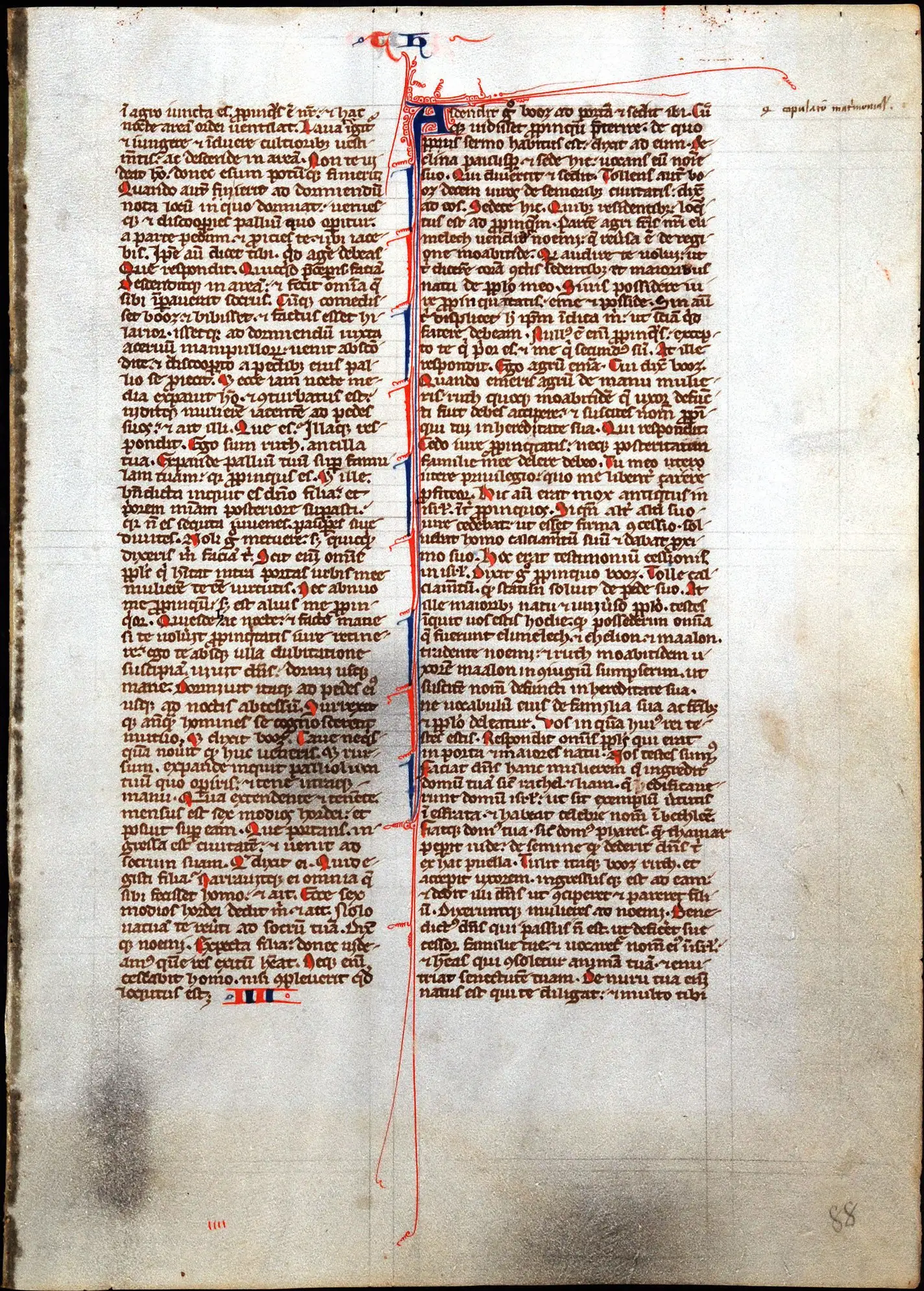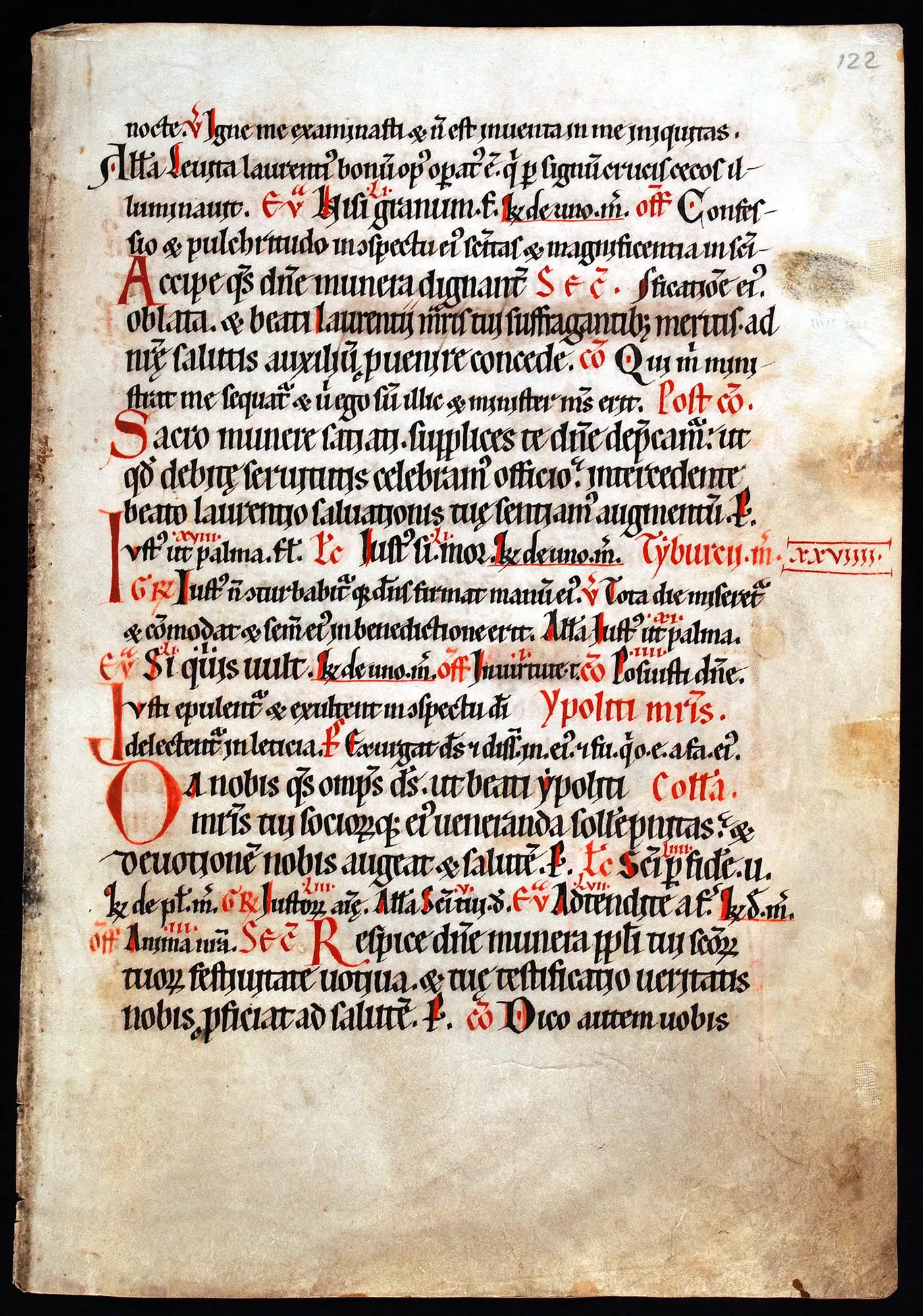Case 2

Single leaf from a Bible in Latin. Northern France (probably Paris), thirteenth century. Reed MSF5.
The establishment of secular universities in the twelfth century led to an increased demand for books in a small portable format – especially Bibles. The enormous length of the Bible always caused problems for scribes – one solution was to write in an extremely small hand.
The text of the displayed leaf, written in a very small Gothic bookhand, is from the third and fourth books of Ruth. In the late Middle Ages, this manuscript belonged to the Carthusian Abbey of Villeneuve-les-Avignon.

Single leaf from a Bible in Latin. Northern France (probably Paris), thirteenth century. Reed MSF5.
Open image in new window

Single leaf from a Missal in Latin. Southern Germany or Austria, late twelfth century. Reed MSF51.
Gradually the round part of letters became a series of straight lines connected by thin oblique strokes. The script of this leaf is in two sizes of an early, very angular Gothic liturgical hand.
The text is part of the Sanctoral with Masses commemorating Saints Lawrence, Tiburtius, and Hippolytus and for the vigil and the feast itself of the Assumption of the Virgin.

Single leaf from a Missal in Latin. Southern Germany or Austria, late twelfth century. Reed MSF51.
Open image in new window

